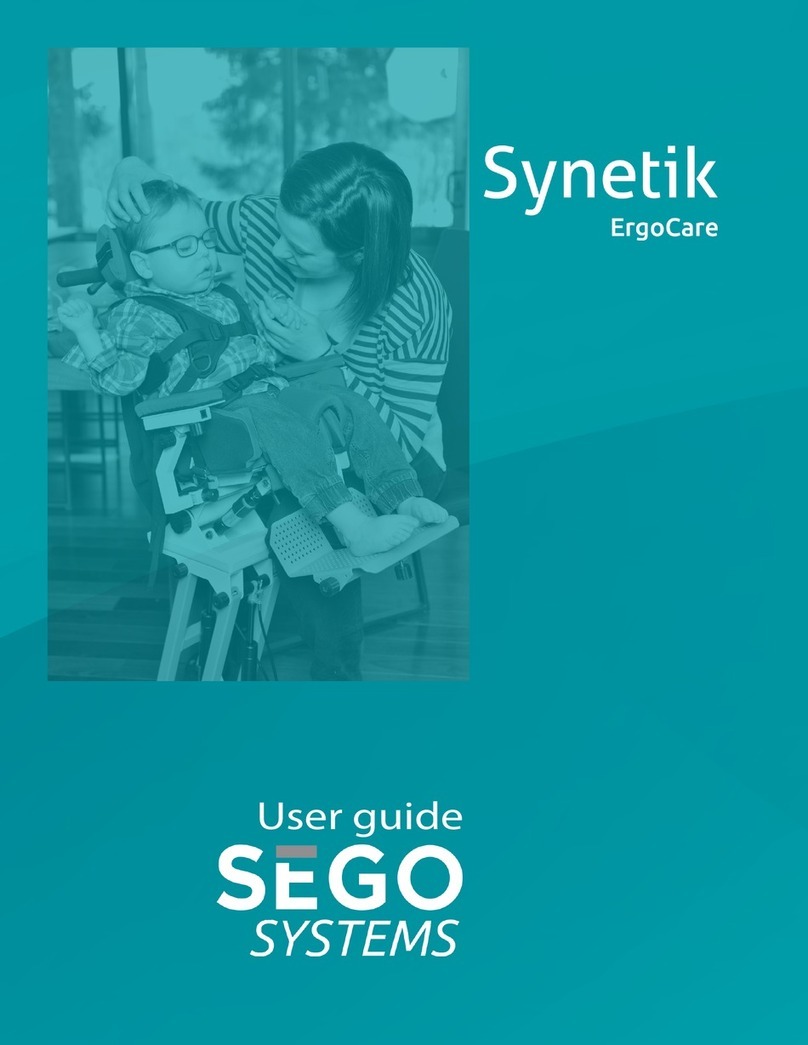
ADJUSTMENT PROCEDURE
1. LOCKING THE WHEELS
Each of the four wheels has a brake. Make sure all wheels are locked when the
standing frame is in use, being adjusted or stored (g. 1).
2. ASSEMBLING THE STANDING FRAME
To facilitate transporting the device, it is made in two parts. To separate
the standing frame core from its base (g. 2b), loosen the two knobs
at the base. Lift the standing frame up so that it totally clears its base
(g. 2a). When assembling, tighten the two knobs securely. Always
keep the device above the ring indicator to avoid injury.
3. FOOT SUPPORT ADJUSTMENT
To adjust the height of the footrests, loosen the two knobs located
behind the main support of the stander core (g. 3c). Slide the
footrest rod up or down to the desired height and retighten knobs
securely to ensure that the weight of the user is well supported. To
adjust the footrest width, you will need to use the Allen key located
on the side of the hydraulic cylinder (g. 3e).
Loosen the set screw located under the block (beneath the footrest)
(g. 3b). Slide sideways to the desired width and then retighten
with the Allen key. For angle adjustment of the footrest, use the
adjustable lever (g. 3d). To do this you will need to lift the lever
slightly and then turn clockwise to tighten and counter-clockwise
(by raising it) to reposition the lever in the proper place. Rotate the
footrest plate to the desired position and retighten.
4. KNEE SUPPORT ADJUSTMENT
To adjust the depth of the knee supports, loosen the knob on the
cross bar of the knee support (g. 4a). Slide knee support to the
required dimension and retighten securely. To adjust the height
of the knee supports, loosen the two knobs on the side and behind
the knee support (g. 4b).
Slide knee supports to the required dimension and retighten securely. For angle
adjustment of the knee supports, you will need to lift the lever slightly and then turn
clockwise to tighten and counter-clockwise (by raising it) to reposition the lever in the
proper place (g. 4d).
g. 1
g. 2b g. 2a
g. 3e
g. 3d
g. 3b
g. 3c
g. 4b
g. 4d
g. 4a




























